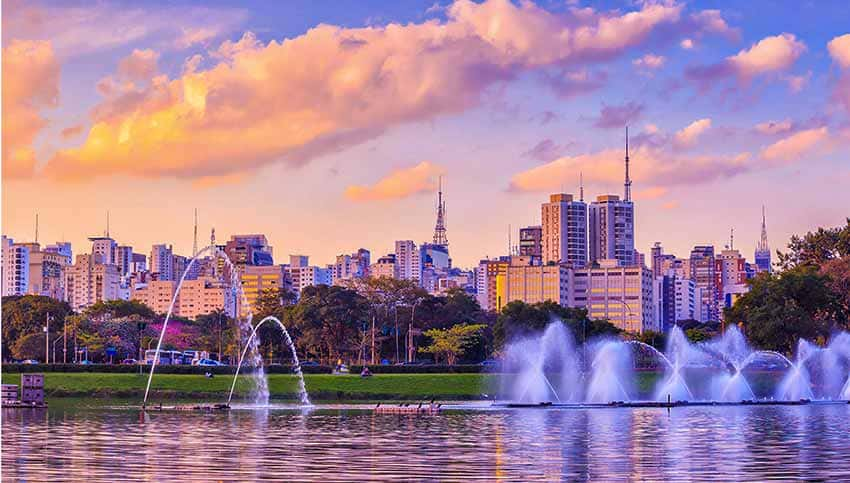In the middle of the concrete jungle there are also small refuges with natural beauty, lakes and animals of some species and we at Portal Sampa have brought you some of the main parks in São Paulo capital , below is a small list:
Ibirapuera Park

It is the largest and most famous park in São Paulo and one of the largest in Latin America. It has incredible gardens, lakes, hiking trails, museums, the Ibirapuera Auditorium and the Japanese Pavilion.
Ibirapuera Park also houses the Afro Brasil Museum, which presents exhibitions on African and Afro-Brazilian culture, the Museum of Contemporary Art (MAC), with modern and contemporary works, and the Bienal Pavilion, which hosts artistic events and international exhibitions.
Vila Lobos Park

Villa-Lobos Park is an excellent example of space transformation and urban afforestation.
With approximately 700 thousand square meters, the park has an incredible structure. There are several courts, a place to run, a beautiful orchid garden and even a library. If you are going with children, there are playgrounds for them to have fun too.
It’s a good option for those who enjoy a bike ride, since there are bike paths throughout the park, or you can take a short trail and get a little closer to the treetops. The place also has a pet area with several dog toys, meaning there’s fun for everyone.
Location: 05461-010
Opening hours: Daily, 5:30am to 7pm
Telephone: +55 (11) 2683-6302
Price: Free entry
Sao Paulo Botanical Garden

Independence Park

The Independence Park , opened in 1989, on the banks of the stream in the Ipiranga neighborhood, in the city of São Paulo, is part of the Brazilian historical and cultural heritage due to the country’s Cry of Independence, proclaimed there by D. Pedro I. It arose from the concern to unite the Ipiranga region as a space of national memory and patriotism, in addition to being a way of preserving and demarcating the space and also a way of making a collective memory common.
Aclimation Park

Aclimação Park is a public leisure area located in the central region of the city of São Paulo, Brazil, in the Aclimação neighborhood, Liberdade district, which currently has an area of 112 thousand square meters and was opened in 1939. The site was home to the city’s first zoo, founded in 1892 on the lands of the former Sítio do Tapanhoin, by Carlos Botelho inspired by the Jardin d’acclimatation, in Paris. The park was acquired by the City Hall in the year of its inauguration, previously belonging to the Carlos Botelho family.
TRIANON Park (Lieutenant Siqueira Campos)

Tenente Siqueira Campos Park , better known as Trianon Park or Trianon Park , was opened on April 3, 1892 in the city of São Paulo, one year after the opening of Paulista Avenue. It was designed by French landscaper Paul Villon and opened by Englishman Barry Parker. The name Trianon was given due to the existence of the Trianon Restaurant opened on June 10, 1916, which was created and founded by brothers Vicente Rosati and Luigi Rosati (Italian immigrants from the city of Fontecchio) on the premises of the Belvedere da Paulista located in front of the park, where the São Paulo Museum of Art is located today. The owner of the elegant “Bar and Restaurant” chose the name that comes from the Grand Trianon Palace in Versailles, which was owned by Marie Antoinette, due to the similarity of the buildings. From 1911-1914, during the administration of Baron of Duprat, the architect Ramos de Azevedo developed the project for the so-called Belvedere, built in 1916 and demolished in 1951 to make way for the first edition of the São Paulo Art Biennial.



